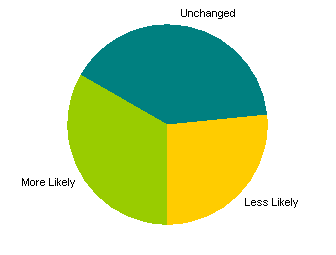

Step 2 - Insert the type of pie chart you wantįrom the Insert tab, go to the Charts command group and click the Insert Pie or Doughnut Chart icon. So select only what you need by holding down the Control key between non-adjacent selections. Remember, Excel puts (or tries to put) everything that is highlighted on your chart. When selecting the cells to be used as your source data, there may be times when your data is non-contiguous. Remember, pie charts can only handle one measurement or value per independent variable. This should include what is being measured, and how much of it there is.
#Create pie chart in excel with words how to#
How to make a pie chart in Excel Step 1 - Select your dataįrom your Excel worksheet, highlight the data you want to appear in your pie. This goes for all Excel charts, by the way, not just pie charts.Įnough small talk. These are called contextual tabs, meaning that they only appear when you select a chart. Most of the menu options we’ll be referring to below can be found on the Design or Format tabs. After all, even if the slices are not labeled with individual values or percentages, and if there is no legend (doesn’t sound like a very good chart, to be honest), the relative size of each slice is a visual indicator of the value of each variable in relation to the other variables, and to the pie as a whole. Pie charts are notoriously bad for displaying lots of data points, simply because the slices will be too small, making them meaningless for making a point visually.Īs long as you remember that the data in a pie chart will always add up to 100%, you can appreciate why it’s so easy to read. Negative values will be displayed as positive values, as zeros won’t be displayed at all.
#Create pie chart in excel with words series#
you want to display more than one data series (i.e., each category has multiple data points).Let’s get this out of the way - pie charts are not ideal for every type of data. It’s easy to create and even easier to read. It usually doesn’t require the audience to have an in-depth knowledge of the subject being reported on, nor any lengthy explanations of what it is meant to describe. Why? Because they can represent data that falls to the left of or below a baseline-as is appropriate for negative numbers.A pie chart is very useful for displaying basic statistical data. If negative numbers are expected, then column or bar charts are a much more appropriate choice. Pie charts, by their nature, are not well-suited for displaying negative numbers.

Granted, they are negative portions, but they are portions nonetheless. After all, pie charts represent portions of a whole-yet by filtering or adjusting totals, portions of the whole are being removed. Of course, all this being said, one would have to wonder if a pie chart is the appropriate chart for representing this type of data in the first place.


This will cause those values to be ignored in the chart created by Excel. If your data is conducive to filtering, you could also set up a filter so that negative values are filtered out. In this case, the value to be charted is set to zero if the sum is less than zero, or it reflects the actual total if the sum is zero or above. Instead of using a standard SUM formula for the values to be charted, you could use a formula such as the following: Thus, pie charts are often created based on the result of some sort of formula, such as the sum of values in a column the sums of each column are the basis for the pie chart. Each value within the series represents a portion of the whole. Normally, people create pie charts based on a simple set of values. You may, however, prefer to have the negative values charted as if they were zero-to not have a slice of the pie. If you create a pie chart, Excel charts negative values as if they were positive (in other words, it uses the absolute value). Excel allows you to easily create charts based on the data in a worksheet.


 0 kommentar(er)
0 kommentar(er)
